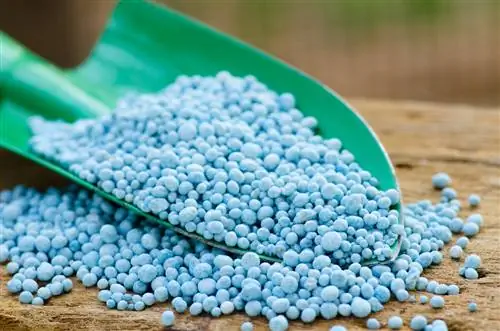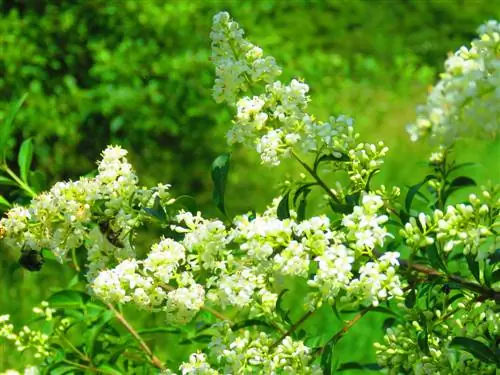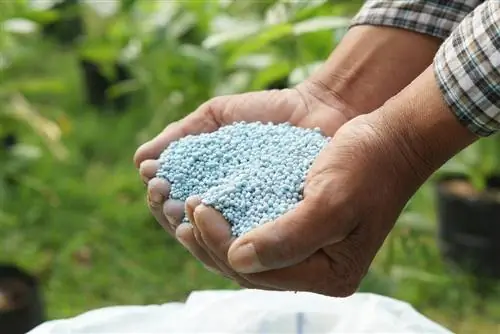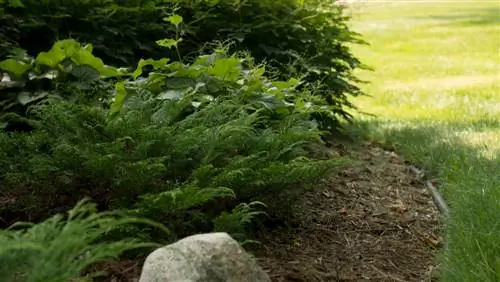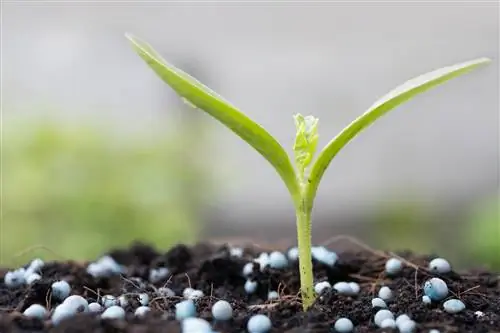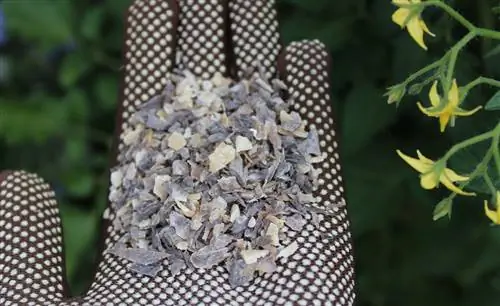- Author admin [email protected].
- Public 2023-12-16 16:46.
- Last modified 2025-01-23 11:22.
Hedges only thrive when the soil conditions meet the needs of the bushes and they are adequately supplied with nutrients. If a nutrient deficiency is evident through discolored leaves or stunted growth, you can successfully counteract this with quick-acting blue grain.
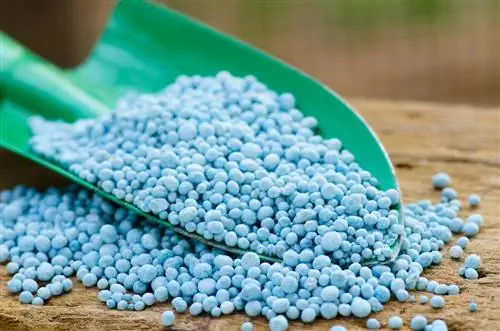
How should you fertilize hedges with blue corn?
Fertilize hedge plantings with blue grain in the main growth phases (March and June) by sprinkling the granules around the bushes and then watering thoroughly. Use the amount indicated on the packaging and avoid contact with the leaves.
What is blue grain?
Blaukorn is a so-called artificial fertilizer (complete fertilizer) made from inorganic s alts. The small blue beads that gave the preparation its name contain the main nutrients nitrogen, phosphorus and potassium. The effect of the compound fertilizer develops very quickly and growth is effectively supported.
Please note that the different Blaukorn (€34.00 at Amazon) products have different compositions. Chloride is occasionally found in this fertilizer, to which some plants may be sensitive.
When and how can this fertilizer be administered?
The months of March and June are recommended for fertilizing with blue grain when planting hedges, as the two main growth phases of hedges fall in this period.
Apply blue grain
On a rainy day, sprinkle the granules on the ground around the bushes in the amount indicated on the package. Make sure that no grains remain on the leaves of the bushes, as this can cause burns.
Water thoroughly so that the nutrients can penetrate the soil.
Improve soil in the long term
In order to keep the use of artificial fertilizers as low as possible, it is recommended to also regularly administer organic fertilizers. These consist of animal or plant waste materials that are broken down by soil organisms. They increase humus formation and have a positive effect on soil fertility.
Over-fertilization, as can occur with Blaukorn, is almost impossible with these preparations. However, the hedge's nutrients are only available after some time.
Since a certain soil temperature and moisture is required to implement mineral fertilizers, it is recommended to mulch hedges.
The following materials are suitable:
- Lawn cutting,
- Leaves,
- Straw,
- all garden waste.
However, you may only use plant parts that are free of diseases and pests.
Tip
Even if there are deficiency symptoms, you should avoid fertilizing the hedge with blue grain in autumn. The artificial fertilizer stimulates growth and fresh shoots form that would not mature until winter. These die when there is frost and the hedge has unsightly holes in the spring.

